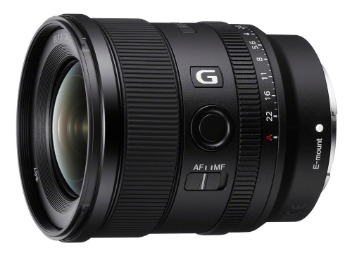Sony Fe 20mm 1 Eight G
In the first example, the shapes are properly rounded and really easily filled. In the second example, we see an anomaly, darkish blobs, that effects a really small portion of the body within the review lens. Those stars are certainly not spherical, though they don’t seem to be unusually distorted for a large-aperture, broad-angle lens. The image below is a a hundred% crop taken from the highest-left corner of an a7R III frame. In the examples beneath, take a look at the fringing colours in the out of focus specular highlights created by the neutrally-coloured topics. A comparatively widespread lens aberration is axial CA, which causes non-coinciding focal planes of the assorted wavelengths of sunshine, or extra merely, completely different colours of light are targeted to completely different depths.

The 24mm lens has modestly much less vignetting and reveals fewer flare effects at slim apertures in our take a look at. The 20mm lens has slightly less geometric distortion, barely less lateral CA, and fewer colour blur. Until now, the widest Sony prime for A7 and A9 collection cameras was the FE 24mm f/1.four G Master.
Fe 20mm F1 Eight G
An almost good lens, and one can see the Aspherics low quality polishing in the spectacular highlights. Should be text dealing with away from the digital camera, or likewise state of affairs. There’s little to no sagittal flare, even with the excessive-decision 60MP sensor of the a7R IV (pay explicit consideration to the stars exhibiting much less distortion correction or motion blur because of the earth’s rotation). This spectacular coma performance is also corroborated by photographer Nate Luebbe, who shows his outcomes from photographs of starry skies with this lens in his video right here.
- Lateral chromatic aberration is so negligible that there’s hardly any shade fringing, even at in direction of the extreme corners of the frame.
- I was stunned at how properly the 20mm G carried out as I was really expecting it to be considerably worse than the 24mm G Master but that’s actually not the case.
- Until now, the widest Sony prime for A7 and A9 sequence cameras was the FE 24mm f/1.4 G Master.
- The first wave of lenses were tailored DSLR lenses, not this one.
This ring has first rate smoothness and the eighty° of Linear Response MF rotation is just right for precise guide focusing in any respect distances. This is a properly-applied focus-by-wire design with changes being moderately-smoothly made. This lens design incorporates two AA elements and three ED (Extra-low Dispersion) glass parts as seen beneath. While not completely round, the corner circles usually are not very distorted. As the aperture narrows, the doorway pupil dimension is decreased and the mechanical vignetting absolves with the shapes turning into spherical.
Cameralabs Digicam Critiques, Lens Critiques, Pictures Guides
It actually trumps the Tokina which was certainly one of my biggest issues with it – it by no means felt like an f/2.0 lens. Single exposures have been quite noisy as a result of heavy vignetting and poor mild transmission, meaning it wasn’t one of the best lens for astro timelapses. Below is an example of the Sony vs. Tokina at f/2.zero with all other settings stored the identical.